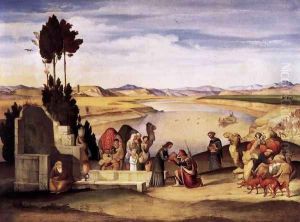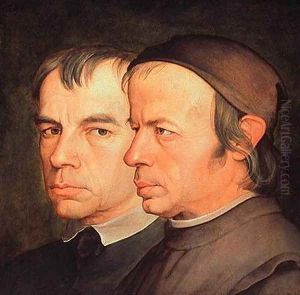Johann Anton Alban Ramboux Paintings
Johann Anton Alban Ramboux was a German painter, draftsman, and museum director known for his work in the 19th century. Born on October 5, 1790, in Trier, which was then part of the French Republic, Ramboux was influenced by the cultural milieu of the Napoleonic era. His career spanned a period of significant political, social, and artistic changes in Europe, including the rise of Romanticism and the later revolutions of 1848.
Ramboux was initially trained by his father, who was also an artist, before moving to Paris to study under Jacques-Louis David, a leading French painter. However, his time with David was short-lived as the political climate in France changed with the fall of Napoleon. Ramboux then traveled to Italy, where he spent a considerable amount of time, particularly in Rome. During his stay, he was deeply influenced by the art of the Italian Renaissance and the early Christian period. He created copies of Italian frescoes and was particularly adept at capturing their coloristic and compositional nuances.
In 1822, Ramboux returned to Trier and began to work as a portrait painter. His portraits were known for their sensitivity and attention to detail, which earned him a significant reputation. In 1832, he was appointed the director of the Wallraf-Richartz Museum in Cologne, a position he held until his retirement in 1859. As a director, he was instrumental in developing the museum's collection, focusing on medieval and Renaissance art, which reflected his personal interests and expertise.
Ramboux's work as an artist was characterized by his historical and religious paintings, which often incorporated elements from early Italian and German art. He was also known for his lithographs and watercolors. His commitment to the art of the past was not just reflected in his paintings but also in his efforts to preserve and promote historical art through his museum work. He compiled a collection of his copies of Italian frescoes, which was published in a portfolio that became a valuable resource for art historians and students.
Johann Anton Alban Ramboux passed away on October 10, 1866, in Cologne. His legacy is preserved through his contributions to the Wallraf-Richartz Museum and the artworks he created. His dedication to the study and preservation of historical art styles made him an important figure in Germany's 19th-century art scene, particularly in the context of the Romantic movement's interest in the medieval and Renaissance periods.

